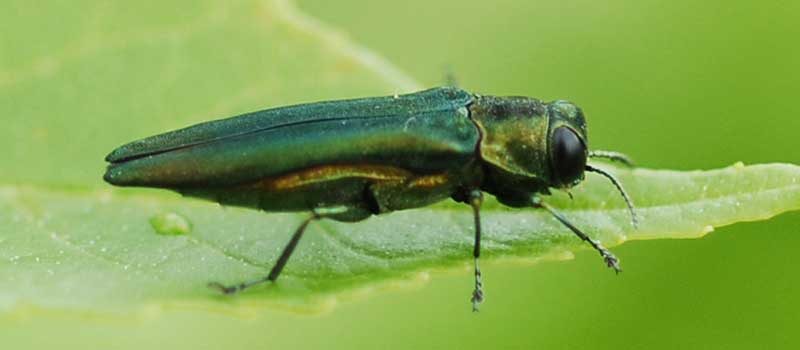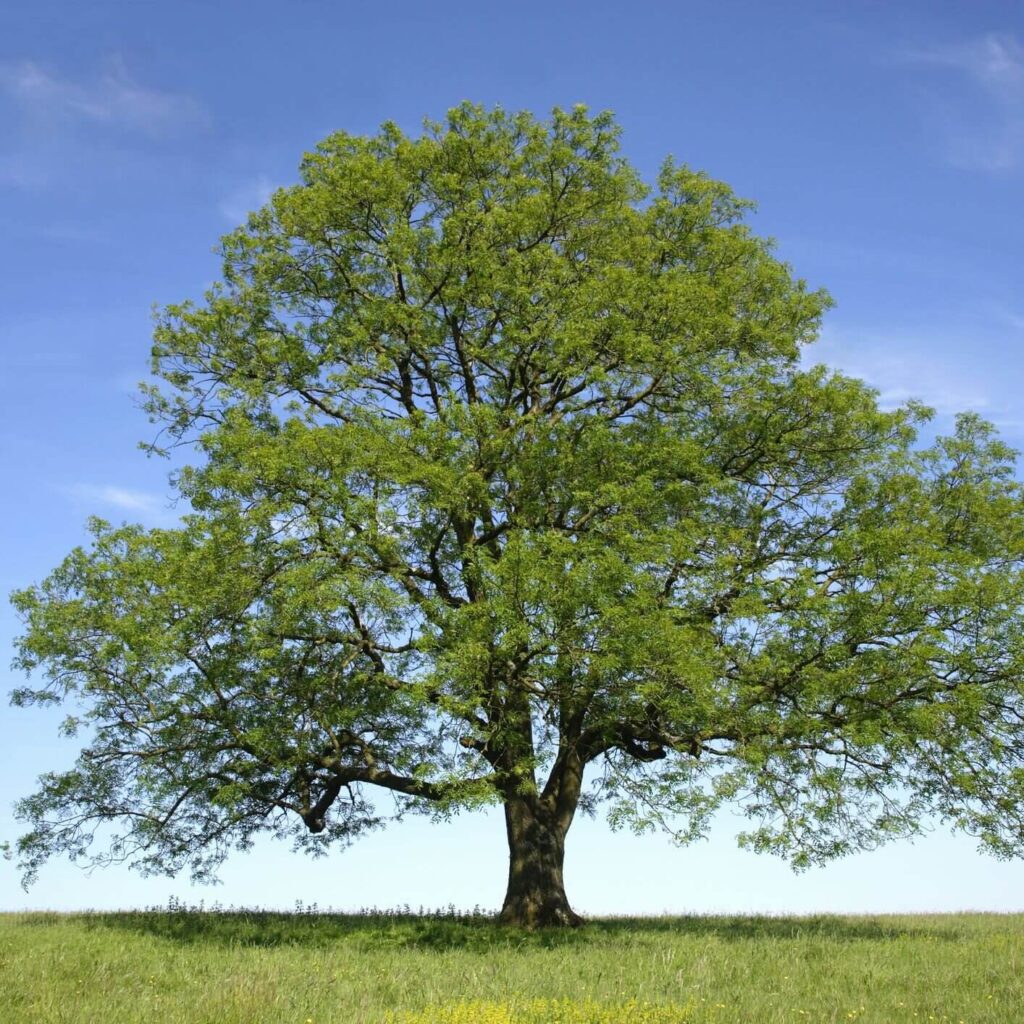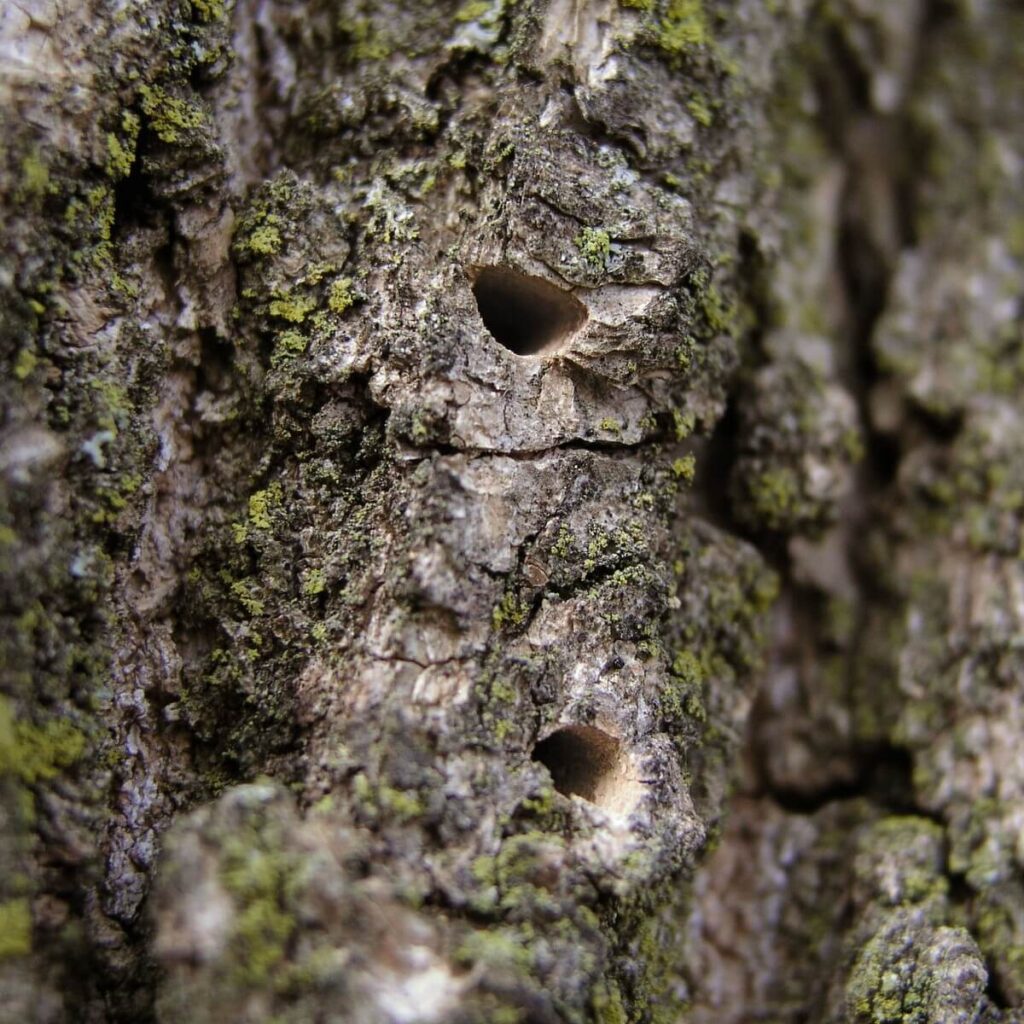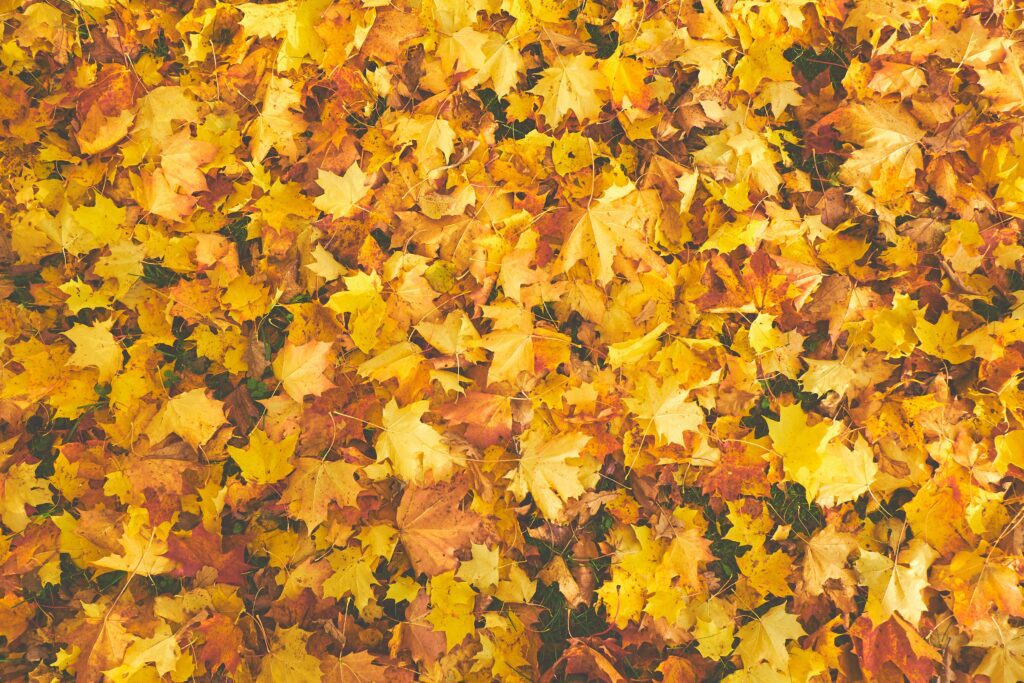The Emerald Ash Borer is a wood boring beetle, with a metallic green ½ inch long body originating from Asia, and was discovered in North America, in 2002. Although the 2002 finding was in Michigan, they were confirmed in Colorado by 2013. Emerald Ash Borers have killed hundreds of millions of trees in North America since their fateful arrival.

However, it’s not them you truly need to worry about, it’s their larvae. The larvae are small white grubs that tunnel under a tree’s bark, and can cause feeding damage to the heartwood of the tree that greatly weakens your trees. And more often causing the trees to break, and in rare, more severe, cases it can even cause their death.
What trees do Emerald Ash Borers attack?

Emerald Ash Borers feed on their namesake, the Ash Tree, and with continuous feeding, can kill the trees in 3-5 years. Colorado State University states that they expect Emerald Ash Borers to eventually kill almost every unprotected Ash tree growing in North America. Since its discovery in 2002, Emerald Ash Borers have killed or seriously damaged millions of native Ash trees.
Signs you have an infestation of Ash Borers:

If you have Ash trees on your property, remember to watch for the signs of Emerald Ash Borers. If you notice any of the following signs, or multiple signs, there’s a chance you have an infestation, and should take immediate action.
- Thinning and Yellowing Leaves
- Branches Beginning to Die
- Suckering at the Lower Portions of the Trunk
- Excessive Woodpeckers and Woodpecker Holes
- Vertical Cracks in the Bark
- D-Shaped Exit Holes
How to get rid of Ash Borers:
Emerald Ash Borers are one of the most common tree diseases. Worried you have an infestation? Well, first take a deep breath you can get rid of Emerald Ash Borers.
First, attempt to alleviate any tree stresses, and then treat with insecticide. This insecticide should be used as early as possible to ensure it eliminates the larvae. Keep in mind, soil insecticides aren’t as effective as bark ones. We understand that infestations can be stressful, especially ones as detrimental to a tree’s health.
If you’d rather leave your tree’s health to the professionals, we have a protection service targeted towards wood boring insects.
Other Great Articles about Lawn Care Trips

Understanding How Pre-Emergent & Post-Emergent Weed Control Products Work
Weeds can be the bane of any homeowner’s lawn, especially in central Colorado. If you’re battling these pesky intruders, understanding the differences between the various weed control products available can be daunting. That’s why we’re going to explain the two main types of weed management products, pre-emergent and post-emergent herbicides. As you read on, you’ll…

The Complete Guide to Fall Lawn Care: Best Practices for Preparing Your Lawn for Winter
Is this your first fall as a Colorado Springs homeowner? Whether you’re ready to winterize your lawn for the first time or simply need a fall lawn care refresher for the home you’ve lived in for years, these essential lawn care basics will help you transition your lawn from the summer season to winter. Fall…

The Complete Guide to Lawn Mowing + Lawn Mowing Tips for Colorado Springs Homeowners
Mowing your Colorado Springs lawn is more than a weekend chore; it’s essential to keeping your green space healthy and attractive. You may think the only purpose of mowing is to keep your grass from getting unruly. However, your mowing practice can actually help increase your lawn’s density and encourage deep root growth, two factors…
